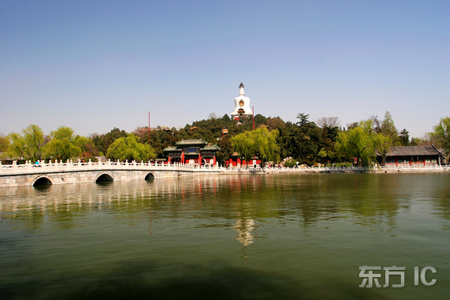|
|
|
Beihai Park 2007-08-28 07:43:02 GMT 2007-08-28 15:43:02 (Beijing Time)
Beihai Park
Beihai Park Beihai Park has been a playground for emperors for hundreds of years. Some attribute this site to Kublai Khan, grandson of Genghis Khan and founder of the Yuan Dynasty in China. The island at the southern end of the lake is said to have been created by excavating the lake on the orders of Kublai Khan, and this location is associated with his great palace. This would have been the centre of Beijing before the Forbidden city was build in the Ming and Qing dynasties. Unfortunately, all that remains of the Khan’s palace today s a large jar made of green jade. Dominating this island, known as the Jade Islet, is a 36m high white dagoba, originally built in 1651 and then rebuilt in 1741. This is one of the most famous dagobas in all of China. Stupas of all kinds appeared in China with the import of Buddhism. Initially, stupas were said to contain some sort of Buddhist relic or ashes of a saintly Buddha. Other times, stupas were built to safekeep holy scriptures and various ritual implements. This leads to the terms Buddha’s pagodas or treasure pagodas. The dagoba is a pagoda of Tibetan style and is sometimes called La Ma Ta after the Llamanist school of Buddhism. Mongolians have also been followers of this school, which originated in Tibet. So it makes sense that Kublai Khan would set about building a large dagoba in Beijing after selecting the city as the capital of the Yuan Dynasty. It was hoped that the dagoba would symbolize the regime’s divine power and keep the nation at peace. Another attraction in Beihai Park is the 9 Dragon Wall, sculpted in 7 colours of glazed tile. Screen walls were common in traditional architecture for giving privacy to an entrance as well as serving as a symbol of rank. The number 9 and the dragon are both symbols of the Emperor. The screen wall in Beihai Park is considered the most splendid of three similar walls in China dating from the Ming dynasty. So the wall in Beihai Park is definitely worth seeing when you visit. |

